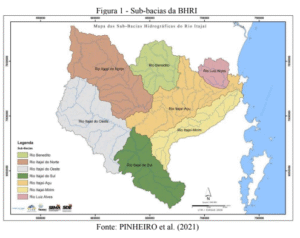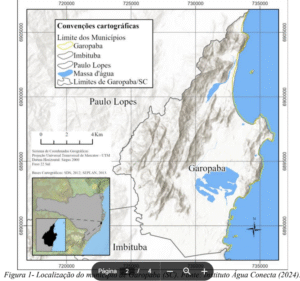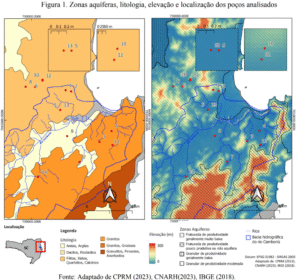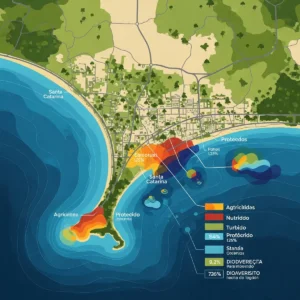Autores: Camila M. de C. Leite, Gustavo Antonio Piazza¹, Rubia Girardi, Talita Montagna¹, Débora Brasiliense Ferreira¹, Adilson Pinheiro
(1) Instituto Água Conecta – R. Dr. Arthur Balsini, 107 – Blumenau – SC, 89.036-240
The growing use of groundwater for multiple uses is observed worldwide. Due to the complexity of hydrogeological processes, understanding aquifer systems, including their hydrochemical characterization, is a necessary action aimed at their use and to recognize the cause and extent of associated problems, such as sources of contamination.
Santa Catarina, like other Brazilian regions, does not have a systematic groundwater monitoring. Therefore, there is little available information about groundwater qualitative and quantitative aspects. This work presents the hydrochemical characterization of groundwater in the Eastern cluster of the state of Santa Catarina, which incorporates following catchments Camboriú, Tijucas, Biguaçu, Cubatão and Madre, comprising a total area of 5,085.8 km².
The most important hydrostratigraphic units present are crystalline rock and cenozoic sediments, which form the fractured or sedimentary aquifer systems, respectively. Groundwater is used for various purposes, with emphasis on human consumption (and public supply), irrigation, livestock watering and industrial. The groundwater data evaluated comes from the Santa Catarina Groundwater database, composed of data from SIAGAS (SGB/CPRM) and CNARH (ANA). The aquifers present within the catchment’s boundaries were evaluated, grouping information considering the integrated management of water resources and their multiple uses.
Groundwater was classified by Piper Diagram method and the major ions were analysed, after checking the ionic balance error (less than 23%). The large ionic variation between groundwater samples results in distinct hydrochemical facies. The groundwater types are predominantly sodium and potassium bicarbonate and calcium and magnesian bicarbonate. Waters that contain the sodium as dominant cation correspond to aquifers areas close to the discharge region, therefore, with longer residence time. On the other hand, when calcium and magnesium are dominant, the waters may be associated with recharge areas, with short residence time in the aquifer.
The third hydrochemical facie were sodium and potassium chloride or sodium and sulphate waters. High chloride and sodium concentrations in groundwater may reflect the influence of a salt wedge due to its proximity to the sea. These dominant ions represent challenges for public supply, as high concentrations of these substances can cause changes in the water organoleptic aspects, affecting the quality and suitability for human consumption. In addition, it can also become a problem for some irrigated crops and livestock watering.
These preliminary results on the hydrochemical characterization and classification of groundwater will guide future stages of implementing groundwater resources management instruments, such as the class definition according to CONAMA 357/2005 regulation; as well as studies on the aquifer-river interconnection.
Versão em pdf: Faça o download





